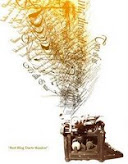Alexander Calder invented the mobile. Because of Calder, babies all over the world are lulled to sleep by colorful dangling shapes. Calder also created an entire miniature circus which could be packed into briefcases and carried back and forth between America and Europe. He was certainly a unique artist.
Calder was born in Pennsylvania in 1898. His parents were both artists. His father was a sculptor and his mother painted portraits. They knew it was difficult to earn money as an artist so, though they encouraged Calder to create art, they did not want him to choose to art as a job.
Alexander Calder’s talent could be seen even in his first sculpture, which he created when he was four years old. As he continued to sculpt, Calder became interested in sculpture that moved. He created a duck that rocked when tapped and a train that ran down a track.
He followed his parents’ advice and studied engineering in college. Calder wasn’t happy in any of the jobs he worked after college, though, and decided to become an artist after all.
While he studied at the Artist Students’ League in New York, Calder sketched for the National Police Gazette. One of his assignments marked the beginning with a love and fascination for the circus: he sketched scenes from the Ringling Bros. and Barnum and Bailey Circus.
Calder moved to Paris in 1926 where he began to build toys that moved. These toys eventually became his own miniature circus. He packed his circus into suitcases and performed in the U.S. and in Europe. You can see a video clip of Cirque Calder at YouTube. Calder seems like quite a character.
Calder’s interest in movable art led him to create mobiles. Air currents caused the mobiles to move. Calder also created sculptures that didn’t move. He called them “stabiles.” Most of them were made out of painted wood or metal. Check out the official Alexander Calder website to see pictures of these mobiles and stabiles.
In 1973 Calder painted a plane for Braniff International Airways. The plane became a “flying canvas.” He painted one more plane and began a third before he died in 1976.
Tomorrow, I’ll show you how to make your own Calder-inspired mobile!
Return to main page.
Monday, April 14, 2008
Subscribe to:
Post Comments (Atom)






1 comment:
Hi my name is johnathan and my father in law has the original painting of Braniff International planes and one of a sun set we are trying to sell the they are signed and everything he has a lot if any one can help e-mail me at texarican85@yahoo.com thanks
Post a Comment